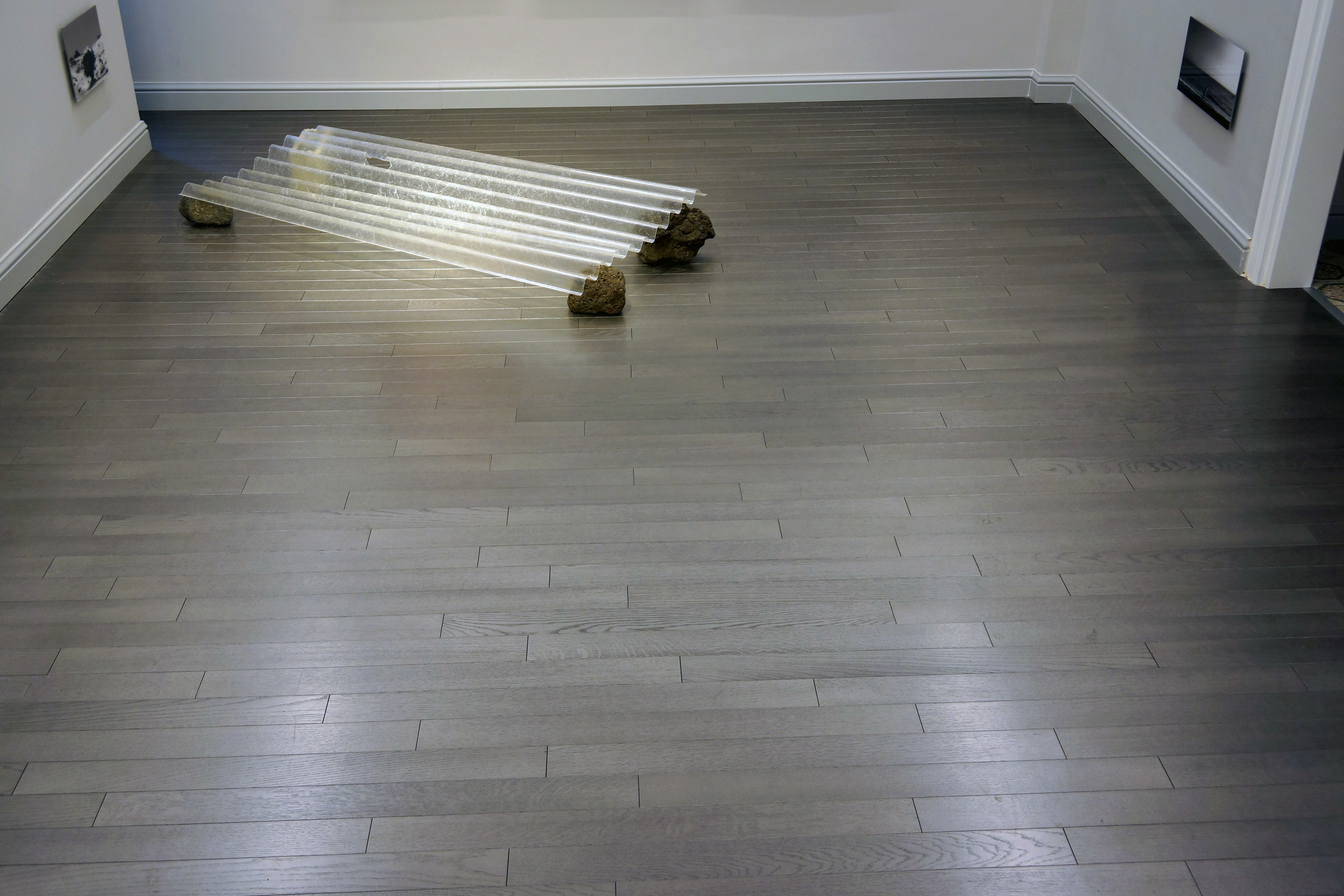




The first thing I did once I had been invited to participate in this exhibition was to start reading The Tempest by Shakespeare. The more I read, the stronger the images in my mind. The depths and desolation of the island carried me away, yet this bleak atmosphere brought me some inner peace. I enjoyed my solitude. But where was I supposed to go from here? That was obscure. Maybe this is the tricky part of producing art. Suddenly you embark on an unknown journey and you need to be competent enough to make a controlled landing without getting hurt. Also, during this journey, you need to take your time to heal your wounds, so you will have nothing more than a couple of scars when you land. For me, this was the beginning of an equally stressful but pleasant adventure.
[…]
The visitor would go deep down into the installation, crouch down and then straighten up and breathe. Thus I think I was expecting visitors to exist differently through the entire exhibition. I imagined them in different postures, looking around from different angles and thus feeling unique. I hope this objective was achieved. If they crouched, down there they would feel truly isolated and alienated. I had thought that, in the 21" century, in an era when we are gradually falling far from being human, the visitors could elevate themselves to a higher position with a simple crouch. Selim! Aren't you being too romantic again, your eyes set on a dream once more? Then again, "have you never seen a sylph?"
Man Throwing Stone into the Sea, 2004
Juniper Tree, 2004 / The Tempest, 2015